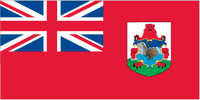Compare
St. Vincent and the Grenadines
to
Bermudato
BermudaThe GDP per capita in Bermuda is $86,000 while in St. Vincent and the Grenadines it is $12,100
This entry shows GDP on a purchasing power parity basis divided by population as of 1 July for the same year. A nation's GDP at purchasing power parity (PPP) exchange rates is the sum value of all goods and services produced in the country valued at prices prevailing in the United States. This is the measure most economists prefer when looking at per-capita welfare and when comparing living conditions or use of resources across countries. The measure is difficult to compute, as a US dollar value has to be assigned to all goods and services in the country regardless of whether these goods and services have a direct equivalent in the United States (for example, the value of an ox-cart or non-US military equipment); as a result, PPP estimates for some countries are based on a small and sometimes different set of goods and services. In addition, many countries do not formally participate in the World Bank's PPP project that calculates these measures, so the resulting GDP estimates for these countries may lack precision. For many developing countries, PPP-based GDP measures are multiples of the official exchange rate (OER) measure. The differences between the OER- and PPP-denominated GDP values for most of the wealthy industrialized countries are generally much smaller.
Source:
CIA World Factbook
The life expectancy at birth in Bermuda is 81.04 while in St. Vincent and the Grenadines it is 74.86.
This entry contains the average number of years to be lived by a group of people born in the same year, if mortality at each age remains constant in the future. The entry includes total population as well as the male and female components. Life expectancy at birth is also a measure of overall quality of life in a country and summarizes the mortality at all ages. It can also be thought of as indicating the potential return on investment in human capital and is necessary for the calculation of various actuarial measures.
Source:
CIA World Factbook
The per capita consumption of electricity in St. Vincent and the Grenadines is 1,229kWh while in Bermuda it is 9,141kWh
This entry consists of total electricity generated annually plus imports and minus exports, expressed in kilowatt-hours. The discrepancy between the amount of electricity generated and/or imported and the amount consumed and/or exported is accounted for as loss in transmission and distribution.
Source:
CIA World Factbook
Bermuda has an unemployment rate of 9.00% while St. Vincent and the Grenadines has 18.80%
This entry contains the percent of the labor force that is without jobs.
Source:
CIA World Factbook
St. Vincent and the Grenadines consumes 0.7938 gallons of oil per day per capita while Bermuda consumes 1.6506
This entry is the total oil consumed in gallons per day (gal/day) divided by the population. The discrepancy between the amount of oil produced and/or imported and the amount consumed and/or exported is due to the omission of stock changes, refinery gains, and other complicating factors.
Source:
CIA World Factbook
The number of deaths of infants under one year old in a given year per 1,000 live births in Bermuda is 2.48 while in St. Vincent and the Grenadines it is 13.07.
This entry gives the number of deaths of infants under one year old in a given year per 1,000 live births in the same year; included is the total death rate, and deaths by sex, male and female. This rate is often used as an indicator of the level of health in a country.
Source:
CIA World Factbook
7.20 in every 100,000 people are murdered annually in Bermuda compared to 25.50 in St. Vincent and the Grenadines
This entry contains the number of victims of an unlawful death purposefully inflicted on a person by another person. Data is originally sourced from either criminal justice or public health systems.
Source:
United Nations Office on Drugs and Crime
411 in every 100,000 people are currently imprisoned in Bermuda compared to 378 in St. Vincent and the Grenadines
This entry contains the number of people in penal institutions, including pre-trial detainees. Comparability is hampered by differences in local practice, including whether psychiatrically ill offenders are under the authority of the prison administration. People held in a form of custody not under the authority of a prison administration are not included in this figure.
Source:
International Centre for Prison Studies
The annual number of births per 1,000 people in Bermuda is 11.35 while in St. Vincent and the Grenadines it is 13.85.
This entry gives the average annual number of births during a year per 1,000 persons in the population at midyear; also known as crude birth rate. The birth rate is usually the dominant factor in determining the rate of population growth. It depends on both the level of fertility and the age structure of the population.
Source:
CIA World Factbook
 With its 69,839 people, Bermuda is the
201st largest country in the world by
population. It is the 213th largest country in the
world by area with 54 square kilometers.
With its 69,839 people, Bermuda is the
201st largest country in the world by
population. It is the 213th largest country in the
world by area with 54 square kilometers.
Bermuda was first settled in 1609 by shipwrecked English colonists headed for Virginia. Self-governing since 1620, Bermuda is the oldest and most populous of the British overseas territories. Vacationing to the island to escape North American winters first developed in Victorian times. Tourism continues to be important to the island's economy, although international business has overtaken it in recent years. Bermuda has also developed into a highly successful offshore financial center. A referendum on independence from the UK was soundly defeated in 1995.
Check out the recommended reading list below for great sources of information on Bermuda